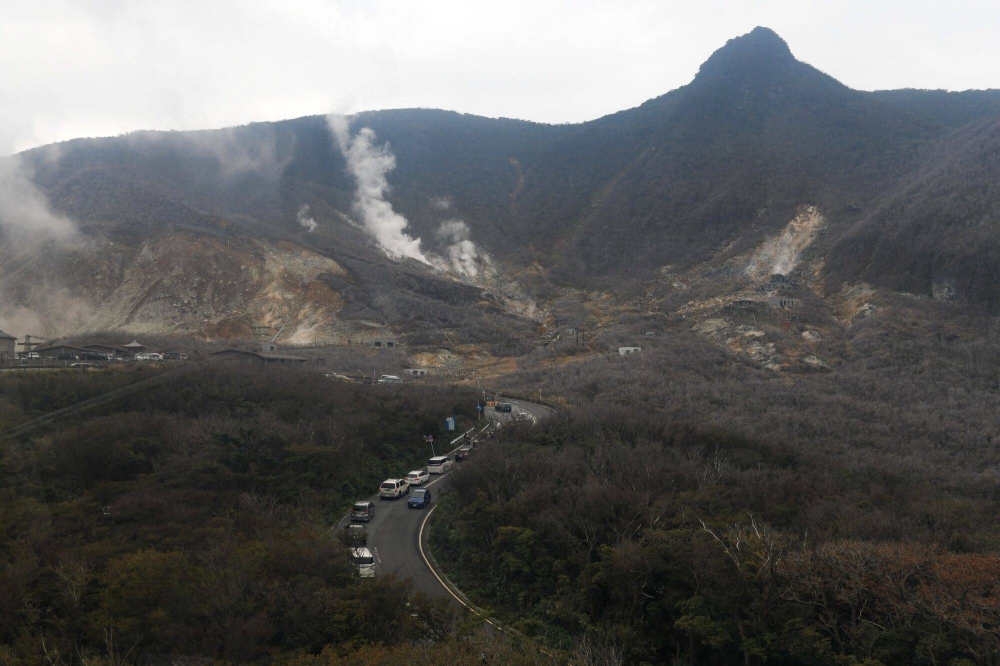It takes a particular kind of traveler to experience Japan’s most traditional hotel: the ryokan. Luxurious as these small, typically family-run inns can be, they’re often tucked into secluded mountainous areas with natural hot springs (and communal baths), without many English-speaking staff, and with sleeping arrangements on futons rather than beds.
Now, Hyatt Hotels hopes to take the ryokan concept mainstream with Atona — a new luxury boutique brand it is launching with Kyoto-based developer Kiraku. The first three locations, scheduled to start opening in 2026, are the well-trodden town of Hakone in Kanagawa Prefecture, the hot springs valley area of Yufu in Oita Prefecture, and Yakushima — a remote and mountainous island in Kagoshima Prefecture.
The starting nightly rates will likely range from $800 (¥125,000) to around $1,300 — and while World of Hyatt members will be able to use points for their bookings, the redemption rates will be equivalent to Hyatt’s most luxurious brands. (For context, a night at Alila Big Sur, one of Hyatt’s most esteemed five-stars in California, runs at around 45,000 points; Park Hyatt Maldives costs about 30,000 points. Atona hotels should fall in between.)
“We were very curious about how to create more opportunities for customers to engage with Japan,” David Udell, group president of Asia-Pacific for Hyatt, said ahead of the announcement of Atona’s first locations. Working with Kiraku helps the U.S.-based company fill the gaps in its knowledge base, especially with regard to development in rural areas and creating an authentic experience.
Japanese American Kiraku founder Kou Sundberg traveled across Japan to nail down Atona’s first three locations, finding building sites and getting local buy-in on the new projects. Now he’s tasked with a tricky balancing act: figuring out how to create hotels that feel both modern and traditional, rooted in the unique facets of Japanese culture without intimidating the global consumer.
So far, he’s decided that guests will be able to choose between the typical futon floor mattresses or western beds. And while high-end ryokan typically feature set, multi-course kaiseki meals served with a sake pairing, Atona properties will have dine-in restaurants with a la carte menus. The idea is that guests can order a hamburger and cocktail if the craving hits.
“You really want to have a nice mix so people can be comfortable,” Sundberg said.
Having amenities that cater to western guests is a strategy that has worked for other ryokan operators, said Catherine Heald, co-founder and CEO of the Asia-focused travel specialist Remote Lands. “Most non-Japanese luxury travelers love a good kaiseki dinner, but only every three to four days — they definitely don’t want it every night,” she said.
But many facets at Atona will adhere to tradition. Instead of a concierge, there will be a point person similar to an okami-san — the word means landlady but refers to the traditional female proprietor of a ryokan who oversees all guests’ needs. Although every room will have a private hot spring bath, there are plans to have larger communal hot springs at each property for guests who want the authentic experience.
The initial details of Atona’s offerings suggest it is catering to curious, energetic travelers who are looking for experiences tied to well-being. (For one, the Yakushima location will be close to a protected national park filled with some of the oldest cedar trees in the world, and open for hiking.) Still, Hyatt and Kiraku are eyeing a wide target audience, with international travelers and local Japanese guests.
It will especially suit the growing number of people who are returning to Japan, having already visited such cities as Kyoto, Osaka and Tokyo. These seasoned travelers will be more likely to venture out toward more rural areas, and Atona could provide a reliable standard of luxury.

Japan’s ryokan are typically small, family-run inns tucked into secluded mountainous areas with natural hot springs.
| Bloomberg
“This larger ryokan setup would be of much appeal to a segment of our clients,” said Tom Marchant, co-founder of the luxury travel outfit Black Tomato, which has a particular expertise in Japan.
“There’s a strong desire for remote ryokan experiences in Japan, and if the product and experience pack a punch with a larger but very personal feel, it’s on the money,” he said, citing the success of brands like Aman and Four Seasons across the country.
With Atona’s unique proposition also come risks. Given their remote locations, small footprints and labor-intensive model, ryokan are notoriously hard businesses to scale and run. While Japan is experiencing a tourism boom now with the weak yen offering a bargain, there’s no guarantee that will last until 2026, when the first location is scheduled to open.
Hyatt and Kiraku have set up a fund to invest into the Atona properties, with the goal of raising ¥20 billion; currently investors have committed about half that sum. “We’re not talking about hundreds of hotels, we’re talking about limited numbers, but really special experiences,” Udell said.
Hyatt has recently added hundreds of luxury properties via mergers with brands such as Alila, Miraval, and Mr. and Mrs. Smith.
While the first three Atona locations will all be newly built, a pipeline of five additional locales may include renovation projects. And if the brand catches on, there is the potential to take it outside Japan to other areas with natural hot springs, in a style similar to the Japanese luxury brand Hoshinoya, which counts locations in Bali and Taiwan.
Sundberg said the latter, along with Northern California and Costa Rica, is in the potential expansion plans. “We really have to go see the destination and … I think something has to kind of click in the head to proceed further.”

